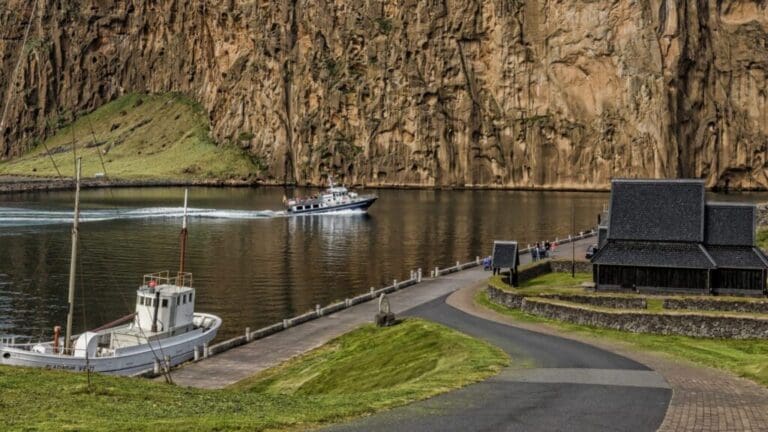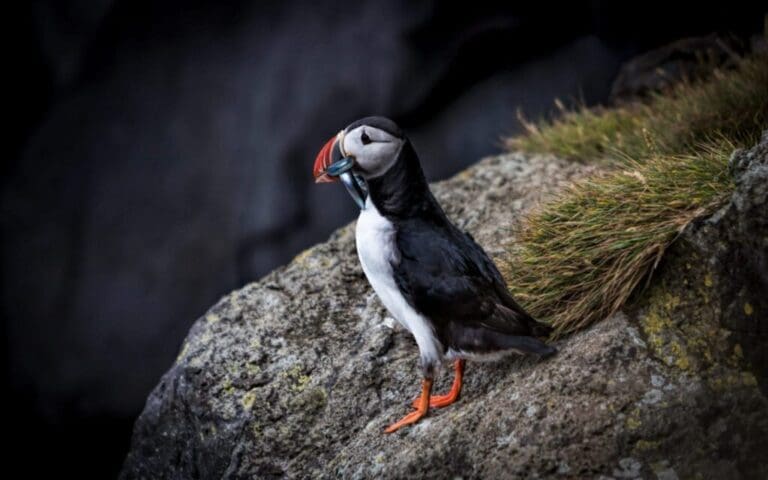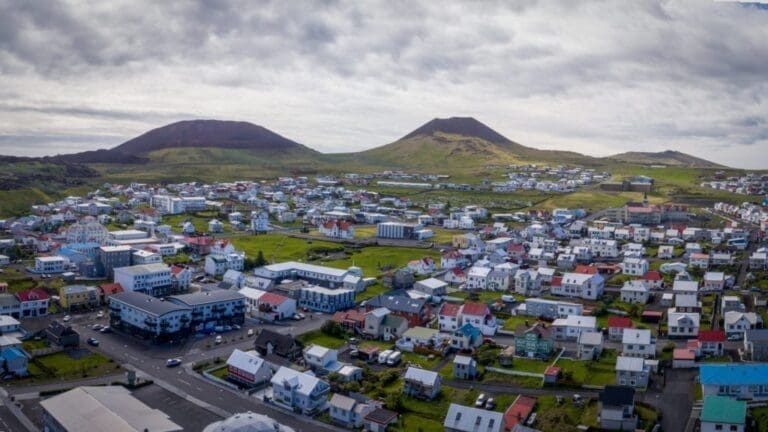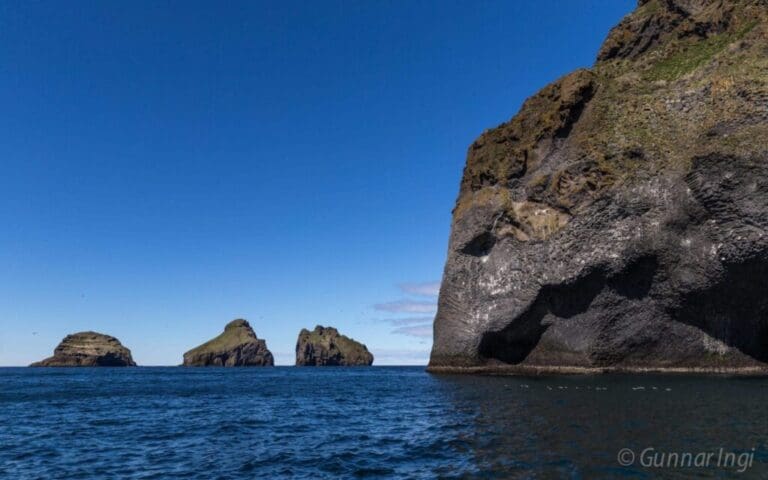Exploring the Westman Islands from the sea is magnificent, sailing calmly and enjoying the view around this archipelago consisting of 14 islands and, in addition, about 30 ridges and cuts is wonderful. The largest island, and the only inhabited one, is Heimaey which means “home island”. Viewing landmarks that are popular on Instagram with your own eyes and from the sea is something you should not miss when you come to the Westman Islands.
The name of the passenger boat is Teista. It’s a beautiful boat and a very nice one to sail around the North Atlantic Ocean (around Heimaey) and enjoy the nature of the North. Teista is the Icelandic word for Black guillemot and there's a good chance you'll see the bird in the tour. The boat can accommodate 80 people, but for everyone to enjoy the tour as much as possible, there is a maximum of 50 people per tour. On the other hand, it is important in Iceland to be able to listen to and read in nature, the captain of Teista is very experienced and knows when it is necessary to cancel trips due to weather and sea conditions. The round tour is every day from 15 of May to 30 of September at 14:15 o’clock, it’s necessary to be at the Ribsafari office (Básaskersbryggja 6) at 14:00 o’clock at last to put on the life wests and walk onboard. The round tour takes 1 hour and 30 minutes.
Teista sails out of the beautiful harbor in the Westman Islands and starts heading north, first we sail on the north side of the Westman Islands. There are magnificent mountains and seeing the complexity of rock formation is quite unique, the north side is the oldest part of the island. We can clearly see how close the Westman islands are to Iceland but still so far away. There are numerous bird species around Westman Islands that nest on the cliffs and on the surrounding islands. We always see some seabirds such as the iconic puffin but also fulmar, kittiwake and gannets.
When sailing along the west side we will see the small islands and the #elephantrock which is the most famous landmark in the Westman Islands. Elephant rock is a large elephant's head that can clearly be seen in the cliffs and the nature has shaped it over thousands of years. Seeing it from the sea is an Instagram moment.
If the visibility is good we can easily see Surtsey, which is the newest island in the archipelago. Surtsey was formed in an underwater eruption that began in 1963 and ended in 1967, it’s the longest eruption in Iceland in historical time.
Passing Great Cape (Stórhöfði) we see the cape towers over us and the puffins have large colonies there. Great Cape is the south side of the island and is one of the windiest places in Europe, the weather station is at 120 m (394 ft) above sea level and open to all winds, the strongest wind that has been measured on the Great Cape is 56 m/s or 125 mph.
Next we sail along the east side where we see the new lava from the eruption in 1973. The new lava enlarged Heimaey in that 6-month the eruption lasted, the eruption was unexpected and the residents had to flee their homes and many never returned. You will see how dark the lava is almost fifty years later when listening to the guide tell about that horrific night.
Before the tour is over we will visit a cave called Klettshellir, that cave is known for its marvelous acoustics so it‘s great ending to the tour listening to music in this beautiful cave.



